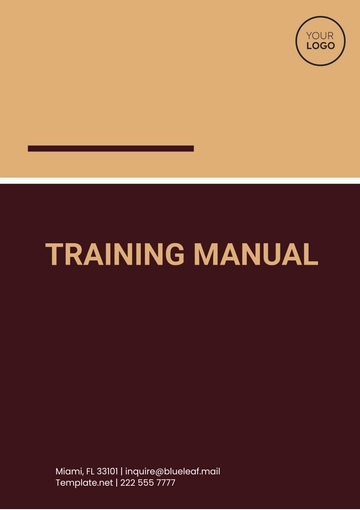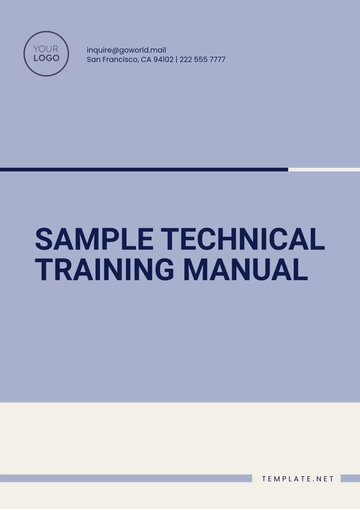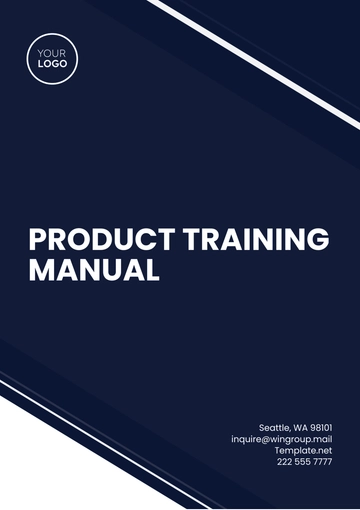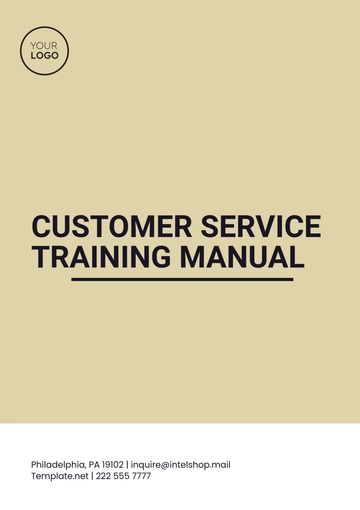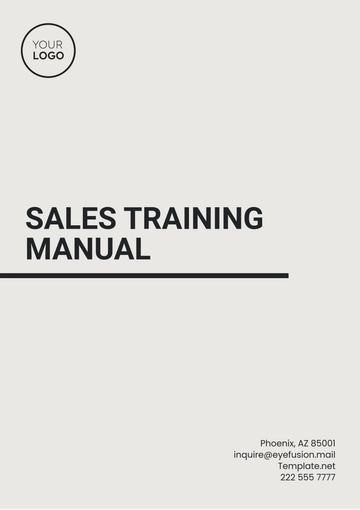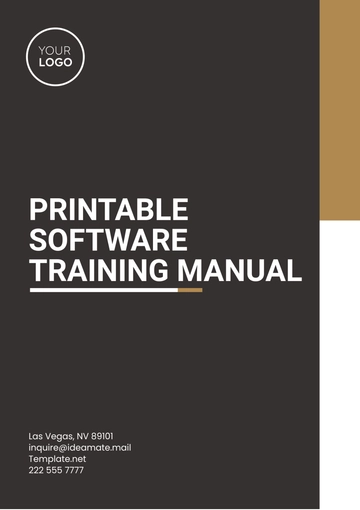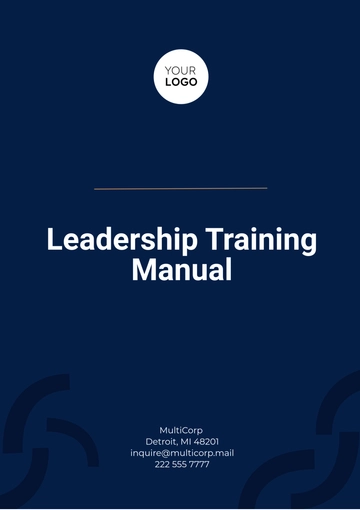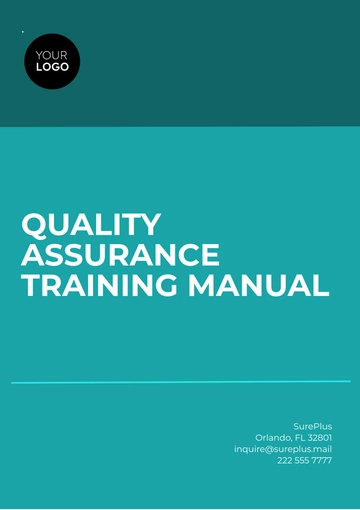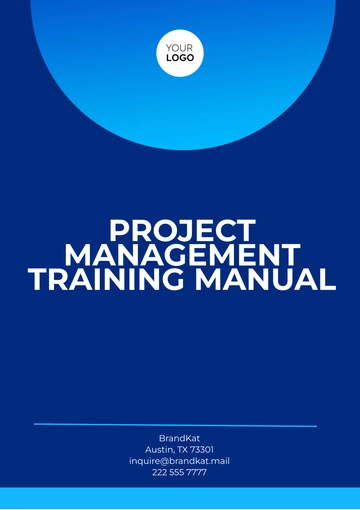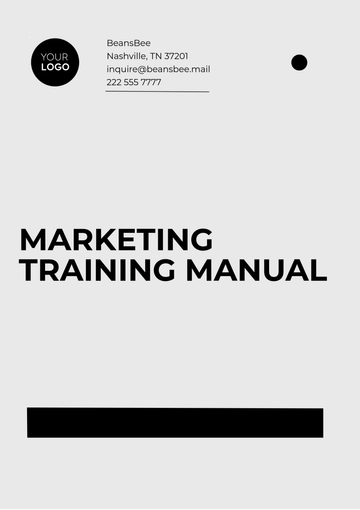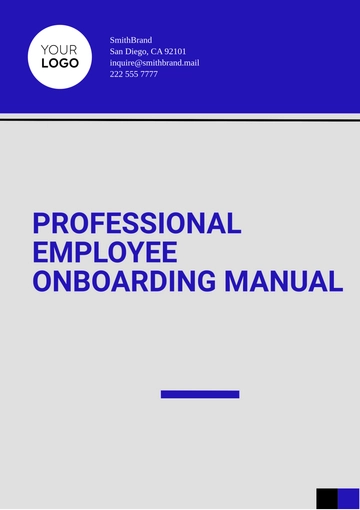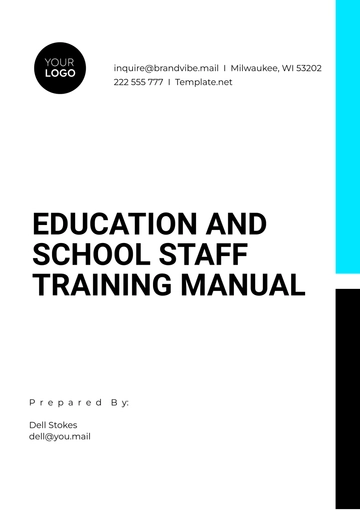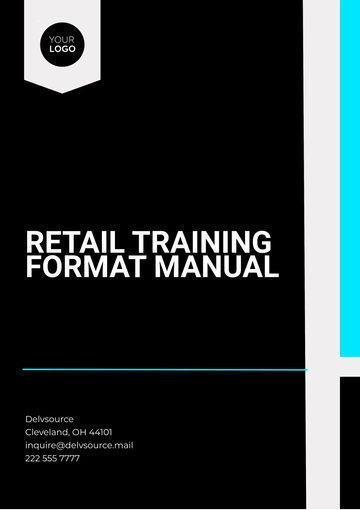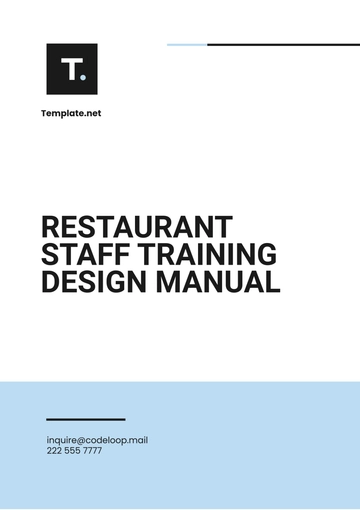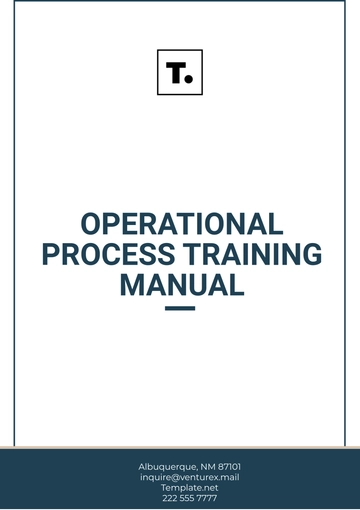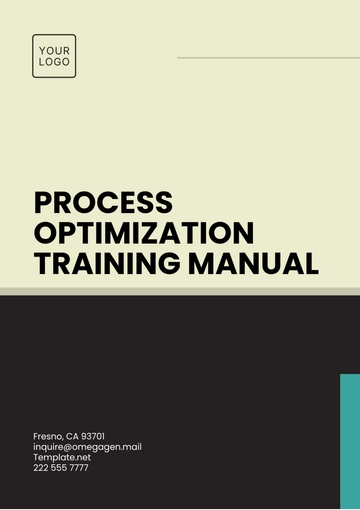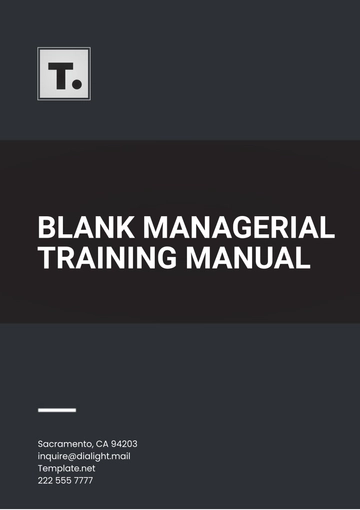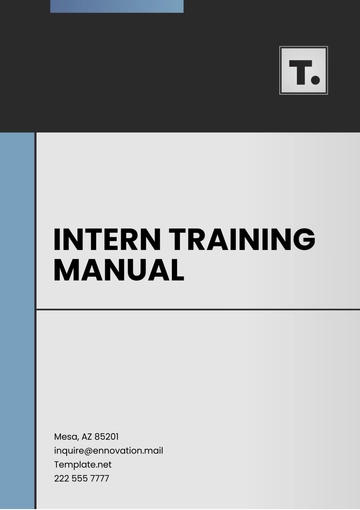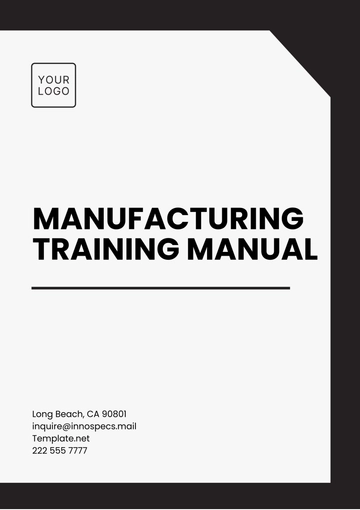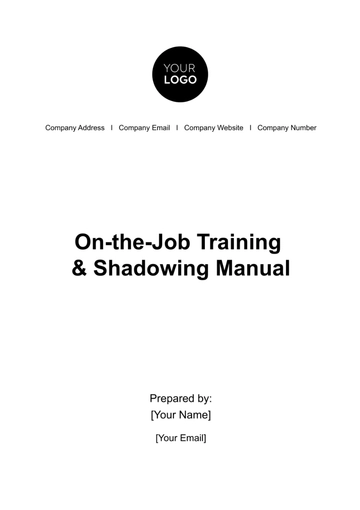Free Cosmetic Store Training Manual
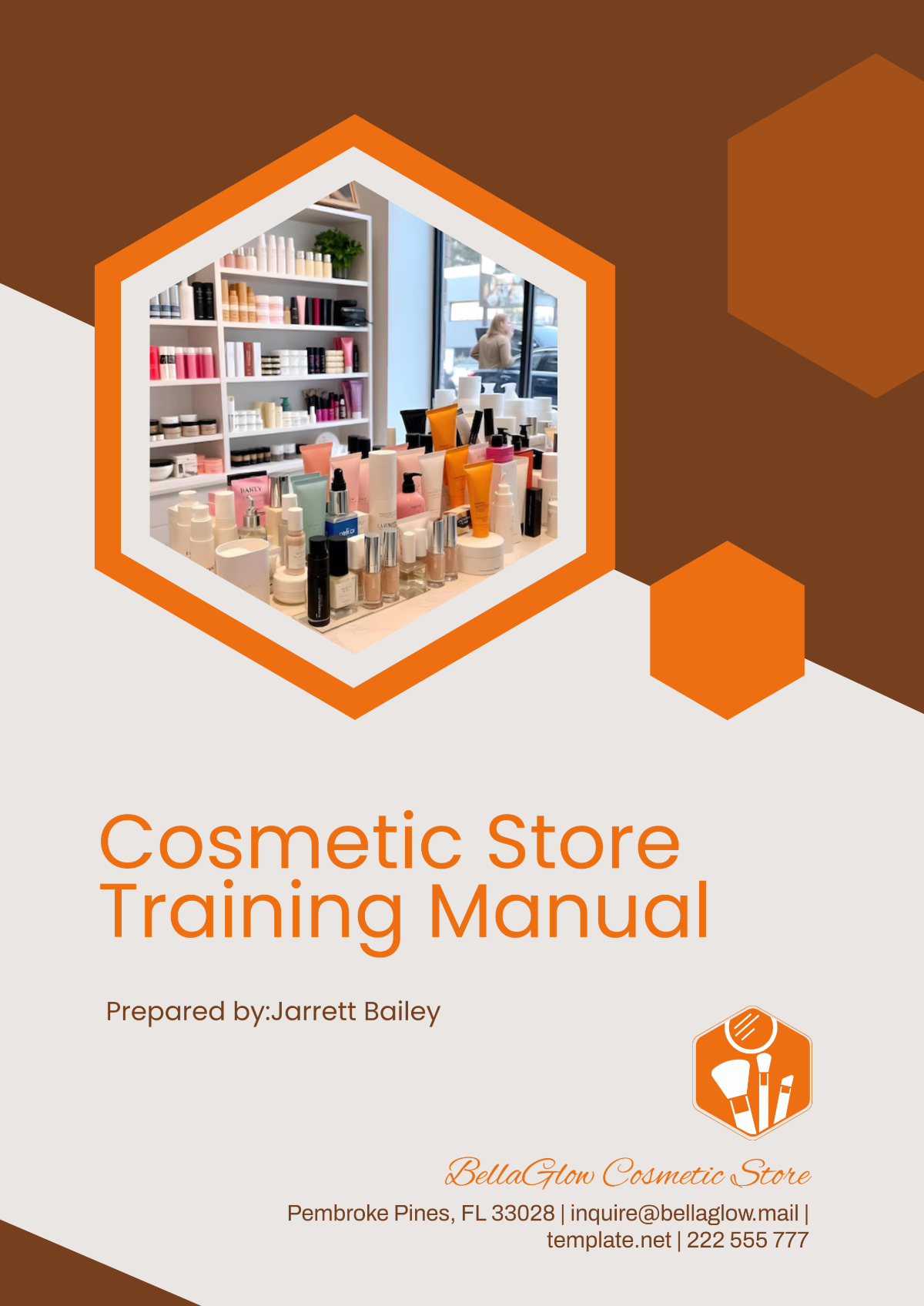
1. Introduction to [Your Company Name]
1.1 Mission and Vision
At [Your Company Name], we are dedicated to not just selling products, but to providing a holistic beauty experience. Our mission is to empower individuals to feel confident in their skin through safe, high-quality, and effective cosmetic solutions. We place a high emphasis on sustainability and ethical sourcing, ensuring that our products are not only beneficial for our customers but also kind to the environment.
We envision [Your Company Name] as the leading global provider of cosmetics by [2050], renowned for our forward-thinking approach to both beauty and sustainability. Our commitment to creating inclusive beauty products, which cater to all skin tones, types, and genders, sets us apart. As we continue to grow, we strive to maintain the highest standards of customer service, product quality, and environmental stewardship.
1.2 Brand Values and Culture
Our company culture is built upon core values that we uphold in every facet of our operations:
Inclusivity – We believe that beauty is diverse and should be accessible to everyone. Our product range includes shades, formulations, and treatments that cater to every skin tone, type, and gender.
Integrity – We operate transparently and ethically in everything we do, from ingredient sourcing to how we engage with our customers.
Innovation – We are constantly pushing the boundaries of cosmetic science, integrating cutting-edge technology and the latest research into our product development.
Customer-Centricity – We believe that customer satisfaction is key to our success. We are dedicated to providing personalized, empathetic, and knowledgeable service to every person who walks through our doors.
2. Customer Service Standards
2.1 Greeting and Engaging Customers
The first interaction a customer has with you will set the tone for the rest of their visit. As soon as they enter, smile and greet them warmly with phrases like:
"Welcome to [Your Company Name], we're so glad to have you with us today!"
"Hi, I'm [Employee Name]. How can I assist you with your beauty needs today?"
Be sure to make eye contact, offer help without being intrusive, and allow them time to browse at their own pace. Building rapport from the start will make customers feel more comfortable and likely to return.
2.2 Understanding Customer Needs
The key to great customer service is asking insightful questions and listening attentively. Take the time to understand what the customer is looking for. Here are some approaches:
Ask about their skin type and concerns – "Are you looking for skincare products that address dryness or acne?"
Understand their preferences – "Do you have a particular fragrance family that you like? Floral, citrus, or woody?"
Ask if they are looking for a specific brand – Some customers may have preferences based on previous experiences or brand loyalty.
This approach will allow you to tailor your recommendations to their exact needs, and ensure a high level of satisfaction.
2.3 Handling Complaints and Feedback
Handling complaints effectively is crucial for customer retention. When faced with a dissatisfied customer:
Listen Actively – Let the customer express their frustration fully without interrupting them. Demonstrating empathy at this stage can de-escalate the situation.
Acknowledge the Issue – Show understanding and validate their feelings. A simple "I completely understand why you're upset" goes a long way in building rapport.
Offer a Solution – Offer to resolve the issue by providing a refund, exchange, or product replacement, depending on the situation.
Follow Up – If the issue requires further attention, assure them that the matter will be investigated and get back to them promptly. Always ensure the customer leaves feeling heard and valued.
3. Product Knowledge
3.1 Types of Products
Understanding the products you sell is essential for providing excellent service. Below is a list of categories and examples of the products in each:
Category | Description |
|---|---|
Skincare | Products designed to cleanse, hydrate, and treat the skin. This category includes moisturizers, face masks, exfoliators, and serums. |
Makeup | Cosmetics used for enhancing facial features, such as foundation, blush, mascara, eyeshadow, and lipsticks. |
Haircare | Includes shampoos, conditioners, hair treatments, and styling products. These products help maintain hair health, shine, and manageability. |
Fragrance | A wide range of perfumes, colognes, and body sprays designed to leave a lasting scent on the body. |
Body Care | Products for the care of the body, such as body scrubs, lotions, hand creams, and bath oils, meant to nourish and maintain skin health. |
Men's Grooming | Tailored products for men, including face wash, shaving cream, beard oils, and deodorants specifically formulated for men’s skin and grooming needs. |
3.2 Product Ingredients and Benefits
Knowing the key ingredients in products and their benefits will allow you to confidently educate customers. Common ingredients include:
Hyaluronic Acid – A moisture-binding ingredient, it draws water into the skin, keeping it plump and hydrated.
Vitamin C – Known for its brightening properties, Vitamin C helps to even skin tone, reduce the appearance of pigmentation, and protect against environmental damage.
Retinol – A form of Vitamin A, it stimulates collagen production, reduces wrinkles, and helps with acne treatment.
Other popular ingredients to familiarize yourself with include peptides, niacinamide, glycolic acid, and salicylic acid. Each ingredient has specific benefits, so understanding these will help in making effective product recommendations.
3.3 Demonstrating Products
Product demonstrations are crucial to helping customers understand how a product works. Here’s a process to follow:
Preparation – Before demonstrating, ensure that your hands and any tools used are sanitized.
Application – For skincare products, apply a small amount to your wrist or the back of your hand and explain the texture and absorbency. For makeup, apply products to your own face or use a tester to demonstrate how to use it properly.
Engage the Customer – Ask if they would like to feel the product or if they have specific questions about how the product works. Be sure to explain the benefits and any potential results, like how long it takes for a serum to show visible effects.
Ensure Satisfaction – After the demonstration, confirm if the customer is happy with what they've learned or if they'd like more information or alternative suggestions.
4. Sales Techniques
4.1 Upselling and Cross-selling
Upselling and cross-selling are valuable techniques for increasing sales while ensuring customers are satisfied with their purchase. For example:
Upselling: If a customer is buying a foundation, suggest a higher-end formula that offers more benefits, such as SPF or anti-aging properties.
Cross-selling: Pair a serum with a moisturizer or recommend a complementary product like a makeup remover to go with a new makeup purchase.
These techniques can significantly increase your sales while also making the customer’s shopping experience more complete.
4.2 Loyalty Programs and Rewards
Loyalty programs not only encourage repeat business, but they also build stronger customer relationships. Explain the program benefits in detail:
Earning Points: Customers can earn points for every dollar spent, which can be redeemed on future purchases.
Exclusive Member Discounts: Loyalty members receive a discount on their next purchase or access to exclusive products that are not available to non-members.
Birthday and Anniversary Gifts: Customers receive special gifts or discounts during their birthday month or anniversary as a token of appreciation for their loyalty.
Encourage all customers to join the loyalty program by explaining these benefits, even during casual transactions.
4.3 Closing the Sale
When closing a sale, always ensure the customer feels valued and satisfied. Some tips for closing:
Summarize the Products – Confirm the items the customer is purchasing and ask if they need any other items.
Offer Assistance with Payment – Ask if they would prefer to use a loyalty card or gift card, and offer to pack their items carefully.
Express Gratitude – Thank the customer for their purchase, and invite them to return. "Thank you so much for shopping with us today! We hope to see you again soon."
5. Store Operations
5.1 Opening Procedures
The opening procedures are crucial to ensure the store is prepared to welcome customers:
Unlock the Store – Ensure that all security systems are deactivated and the store is safely accessible.
Prepare Registers – Ensure that the cash register has enough change for the day and is properly logged into the POS system.
Stock Check – Review the store’s stock, ensure the shelves are organized, and check that all promotional items are properly displayed.
5.2 Closing Procedures
At the end of each shift, employees must follow a series of steps to ensure the store is securely closed:
Secure the Store – Ensure that all doors and windows are locked, and alarms are activated.
Count Cash – Cash should be counted and reconciled against the day’s sales, and a report should be generated.
Clean the Store – The store should be cleaned thoroughly for the next day, including wiping down counters, organizing displays, and vacuuming.
5.3 Inventory Management
Efficient inventory management ensures that popular items are always available for customers, while minimizing overstock. This involves:
Stock Rotation – Follow the FIFO (First In, First Out) method, placing new stock behind older stock on the shelves.
Regular Inventory Audits – Conduct inventory checks regularly (usually quarterly) to ensure that stock levels are accurate and that products haven’t expired.
Reordering Products – Reorder products that are low in stock to avoid stockouts. Keep track of sales trends to anticipate demand for popular products.
6. Hygiene and Safety Protocols
6.1 Personal Hygiene Standards
Employees must maintain high standards of personal hygiene:
Handwashing – Wash your hands frequently, especially after handling products or before eating.
Proper Attire – Uniforms must be clean and neat, and personal hygiene items such as deodorant should be used to ensure freshness.
6.2 Product and Store Sanitation
Sanitation is crucial to ensure the health and safety of both employees and customers:
Sanitize Surfaces – All counters, testing stations, and high-touch areas should be sanitized at least once every hour.
Clean Testing Tools – Makeup testers and brushes should be sanitized after each use to avoid cross-contamination.
Waste Management – Dispose of trash in the appropriate bins, and ensure that recyclables are separated from waste.
6.3 Emergency Procedures
Employees should be prepared for any emergencies that may occur in the store:
Fire Safety – Familiarize yourself with fire exits and ensure that fire extinguishers are easily accessible.
First Aid – Know the location of the first aid kit and be trained in basic first aid procedures.
Evacuation Plan – Ensure you are familiar with the store’s evacuation plan in case of an emergency.
7. Point-of-Sale (POS) System Training
7.1 Registering Sales
Understanding how to operate the POS system is essential for accurate transactions:
Scan the Product – Use the barcode scanner to scan each item, ensuring the correct item is rung up.
Verify the Total – Check that the total matches the expected amount, including any discounts or loyalty rewards.
Ask for Payment – Offer the customer various payment options, including cash, credit card, and mobile payment methods.
7.2 Refunds and Exchanges
Follow the store’s refund policy to process returns or exchanges accurately:
Verify Receipt – Ensure the customer provides a receipt for the returned product.
Check Product Condition – Ensure the product is in its original condition, unopened, and with the price tag intact.
7.3 End-of-Day Reconciliation
At the end of each day, perform a final reconciliation:
Print End-of-Day Report – Generate a report summarizing all sales, refunds, and discounts applied.
Balance Cash Drawer – Ensure the cash drawer matches the sales total, including cash, credit, and debit payments.
Resolve Discrepancies – If any discrepancies are found, report them to the manager immediately for investigation.
8. Employee Code of Conduct
8.1 Dress Code
As a representative of [Your Company Name], employees are expected to maintain a professional and approachable appearance:
Uniform – The store provides each employee with company-issued uniforms. These uniforms should be worn daily, kept clean, and in good condition.
Grooming – Employees should maintain neat and professional hairstyles. Avoid overly casual or distracting accessories such as hats or large jewelry.
Name Badge – Always wear your name badge visibly while on shift.
8.2 Professional Etiquette
Professional behavior is a reflection of our commitment to customer service:
Respect Colleagues and Customers – Engage with all customers and colleagues in a friendly, respectful manner.
Maintain Confidentiality – Do not disclose sensitive company or customer information.
Avoid Personal Conversations – Refrain from engaging in personal phone calls or conversations while at work.
8.3 Ethical Guidelines
Integrity is the cornerstone of our operations:
Honesty – Always ensure that all transactions are processed accurately and that all communication is transparent.
Non-Discrimination – Treat all customers with respect, regardless of their background, ethnicity, gender, or other characteristics.
Sustainability – Promote the use of eco-friendly products and practices to support environmental sustainability.
9. Performance Evaluation
9.1 Key Performance Indicators (KPIs)
At [Your Company Name], we measure performance using a variety of KPIs:
Sales Targets – Each employee is expected to meet or exceed a set monthly sales target, which could be set at [5000] sales per month.
Customer Feedback – Positive feedback from customers is recorded and evaluated.
Attendance – Regular attendance is critical. Employees should aim for [98%] attendance per month.
9.2 Self-Assessment
Employees will perform self-assessments at the end of each quarter:
Reflect on Strengths – Identify achievements, such as meeting sales goals or receiving positive customer feedback.
Set Goals – For improvement, employees can set goals like increasing sales in specific product categories or learning new sales techniques.
9.3 Supervisor Evaluation
Supervisors will conduct evaluations based on observation and feedback:
Observational Feedback – Supervisors will provide regular feedback on performance, including daily work ethic and interaction with customers.
Progress Checkpoints – Mid-year and year-end reviews allow employees and managers to assess growth and set new goals for the upcoming year.
- 100% Customizable, free editor
- Access 1 Million+ Templates, photo’s & graphics
- Download or share as a template
- Click and replace photos, graphics, text, backgrounds
- Resize, crop, AI write & more
- Access advanced editor
Ensure consistent staff performance with the Cosmetic Store Training Manual Template from Template.net. This editable and customizable template covers essential store operations, product knowledge, and customer service training. Tailor it in our Ai Editor Tool to create a professional and comprehensive guide for your team.
